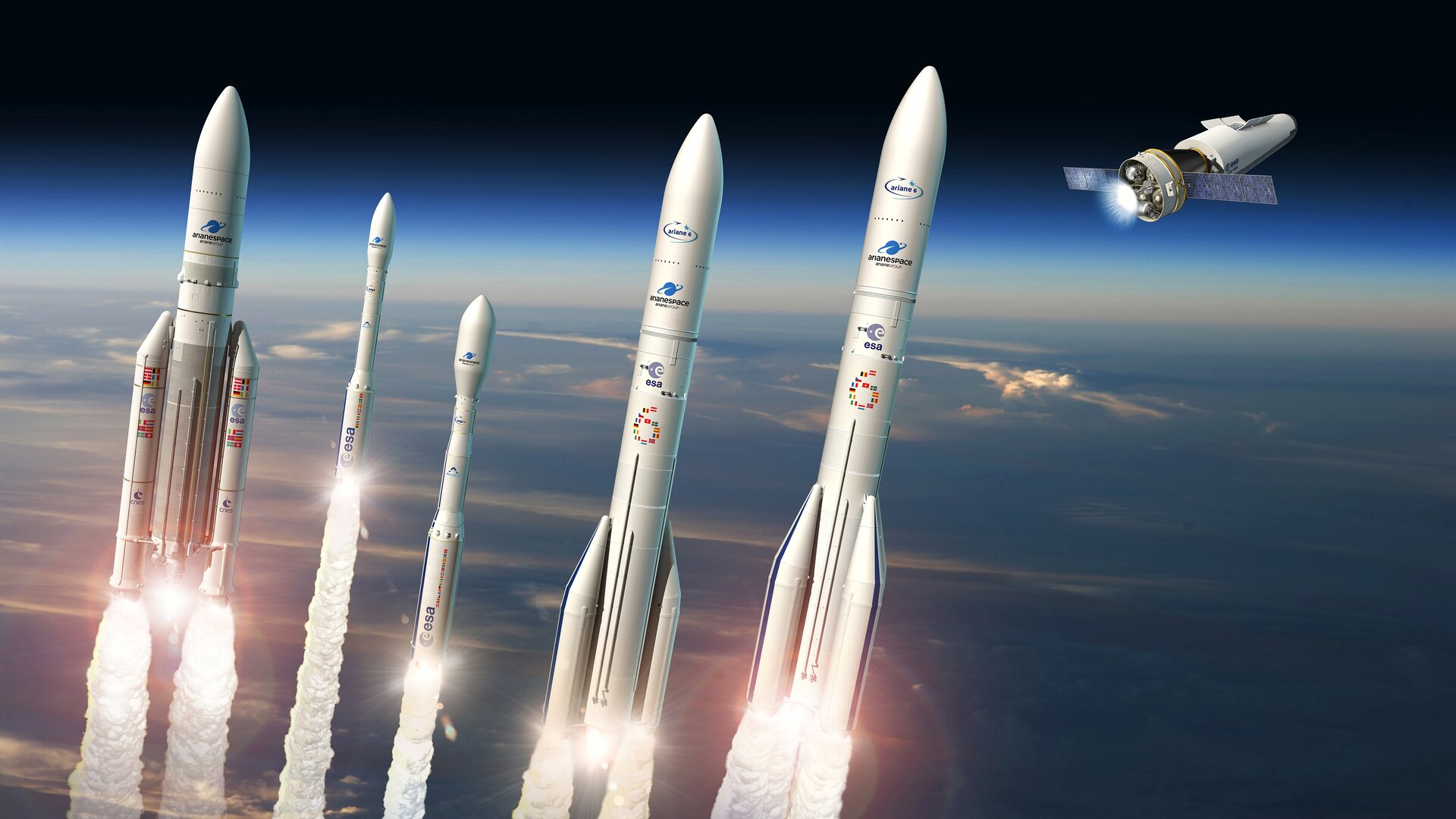
Spacecraft have long been a source of fascination for humanity, enabling us to traverse the vast expanse of outer space and explore the mysteries beyond our planet. These incredible vessels are marvels of human engineering, designed to withstand the harsh conditions of space and propel us to new frontiers. While we may be familiar with some of the more well-known spacecraft, such as the Apollo missions or the International Space Station, there are many surprising facts about these remarkable machines that often go unnoticed. In this article, we will uncover 14 unexpected and intriguing facts about spacecraft that will leave you in awe of the ingenuity and complexity behind these technological marvels.
Key Takeaways:
- Spacecraft are not just NASA’s thing! Other countries and private companies also build spacecraft, helping us explore space and learn more about the universe.
- Spacecraft are like cosmic superheroes, exploring planets, dodging space junk, and even venturing beyond our solar system. They’re our ticket to understanding the universe!
Spacecraft Are Not Only Built by NASA
Contrary to popular belief, NASA is not the only organization responsible for building spacecraft. There are several other international space agencies, as well as private companies, that contribute to the development and construction of spacecraft.
The First Human-made Object to Leave Earth’s Atmosphere Was a Spacecraft
In 1957, the Soviet Union launched Sputnik, the first human-made object to successfully reach outer space. This historic event marked the beginning of the space age and opened up new possibilities for space exploration.
Spacecraft Use Different Propulsion Systems
Spacecraft use various propulsion systems to navigate and travel through space. These include chemical rockets, ion thrusters, and even solar sails, which harness the pressure of sunlight to generate propulsion.
Spacecraft Can Travel at Incredibly High Speeds
Spacecraft are designed to travel at extremely high speeds to overcome the vast distances of outer space. For example, the Voyager 1 spacecraft, launched in 1977, is currently traveling at a speed of approximately 38,000 miles per hour.
Spacecraft Can Remain in Space for Extended Periods
Spacecraft are built to withstand the harsh conditions of space and can remain in orbit for extended periods. The International Space Station (ISS), for instance, has been continuously occupied since November 2000.
Spacecraft Have Explored Other Planets
Spacecraft have been sent to explore and study other planets within our solar system. Examples include the Mars rovers, such as Curiosity and Perseverance, which have provided valuable insights into the Red Planet.
Spacecraft Use Remote Sensing to Gather Data
Spacecraft are equipped with sophisticated instruments and sensors to gather data about distant celestial objects. This process, known as remote sensing, allows scientists to study and analyze various aspects of the universe.
Spacecraft Were Used to Land Humans on the Moon
The Apollo missions, conducted by NASA between 1969 and 1972, utilized spacecraft to successfully land humans on the moon. This monumental achievement marked a significant milestone in human space exploration.
Spacecraft Have Explored the Outer Reaches of the Solar System
Spacecraft such as Voyager 1 and Voyager 2 have ventured beyond the boundaries of our solar system. These interstellar missions have provided valuable data about the outer reaches of space.
Spacecraft Can Be Reused
With advancements in technology, spacecraft can now be designed to be reusable. SpaceX’s Falcon 9 rocket, for example, is capable of launching payloads into space and safely returning to Earth for future use.
Spacecraft Are Essential for Satellite Deployment
Spacecraft play a crucial role in deploying satellites into orbit around the Earth. Satellites are used for communication, weather monitoring, GPS navigation, and various other purposes.
Spacecraft Can Encounter Space Debris
In space, there is a significant amount of debris and defunct satellites. Spacecraft must be careful to avoid collisions with this space junk, which poses a risk to their safety and operational capabilities.
Spacecraft Have Explored Other Moons in the Solar System
Spacecraft missions, such as the Cassini-Huygens mission to Saturn’s moon Titan, have allowed scientists to gather valuable data about these celestial bodies and expand our understanding of the solar system.
Spacecraft Are Advancing Space Exploration
Spacecraft continue to push the boundaries of space exploration and open up new possibilities for scientific discoveries. They have become vital tools in understanding the universe and our place within it.
Conclusion
In conclusion, the world of spacecraft is filled with astonishing and remarkable facts. From the mind-boggling speed to the incredible technologies that enable space exploration, there is no shortage of surprises when it comes to spacecraft. We have explored some of these fascinating facts, including the longest serving spacecraft, the biggest spacecraft ever built, and the challenges astronauts face while working in space. Each fact highlights the level of innovation and determination that goes into designing and operating spacecraft.Spacecraft not only expand our understanding of the universe but also show us the limitless potential of human ingenuity. As our knowledge of space continues to grow, we can expect even more astonishing discoveries and advancements in spacecraft technology. The future of space exploration holds endless possibilities, and the more we learn about spacecraft, the more we realize how remarkably complex and awe-inspiring these vehicles truly are.So, the next time you look up at the night sky and see a shining dot, remember that there is a whole world of incredible facts and stories behind those spacecraft whirling through the vast expanse of space.
FAQs
1. How fast can spacecraft travel?
Spacecraft can reach incredible speeds, with some reaching speeds of up to 36,000 kilometers per hour (22,000 miles per hour).
2. How long can a spacecraft stay in space?
The duration a spacecraft can stay in space depends on various factors, such as its design, fuel capacity, and purpose. Some spacecraft, like the Voyager 1 and 2, have been traveling through space for over four decades.
3. How big are spacecraft?
Spacecraft come in all shapes and sizes, ranging from small satellites that fit in the palm of your hand to massive structures like the International Space Station, which spans the length of a football field.
4. How do astronauts survive in space?
Astronauts survive in space through careful planning and the use of advanced technology. They rely on specifically designed spacesuits to protect them from the harsh conditions of outer space and have specialized equipment to provide them with food, water, and oxygen.
5. How many spacecraft have been launched into space?
There have been thousands of spacecraft launched into space since the beginning of space exploration. Different nations and organizations have contributed to this number, each with their own missions and objectives.
6. Can spacecraft land back on Earth?
Not all spacecraft are designed to land back on Earth. Some are designed for one-way trips, like satellites or probes, while others, like the Space Shuttle, were capable of returning to Earth and landing like an airplane.
7. What are the main challenges of space travel?
Space travel poses numerous challenges, including the effects of microgravity on the human body, exposure to radiation, and the need for complex life-support systems to sustain astronauts during their missions.
8. How many people have traveled to space?
As of now, around 570 individuals from various countries have traveled to space. However, this number is continually increasing as space agencies and private companies are making space travel more accessible.
Spacecraft are marvels of human ingenuity, pushing boundaries and expanding our understanding of the universe. But there's more to explore! Unravel the enigmatic world of spacecraft data analysis, where cutting-edge techniques reveal hidden patterns and insights. Step into the realm of autonomous spacecraft, where advanced systems navigate the cosmos with unprecedented precision. And propel your knowledge further by delving into the mind-boggling facts about spacecraft propulsion, from ion engines to solar sails. Join us on this cosmic adventure as we continue to uncover the awe-inspiring wonders of space exploration!
Was this page helpful?
Our commitment to delivering trustworthy and engaging content is at the heart of what we do. Each fact on our site is contributed by real users like you, bringing a wealth of diverse insights and information. To ensure the highest standards of accuracy and reliability, our dedicated editors meticulously review each submission. This process guarantees that the facts we share are not only fascinating but also credible. Trust in our commitment to quality and authenticity as you explore and learn with us.


